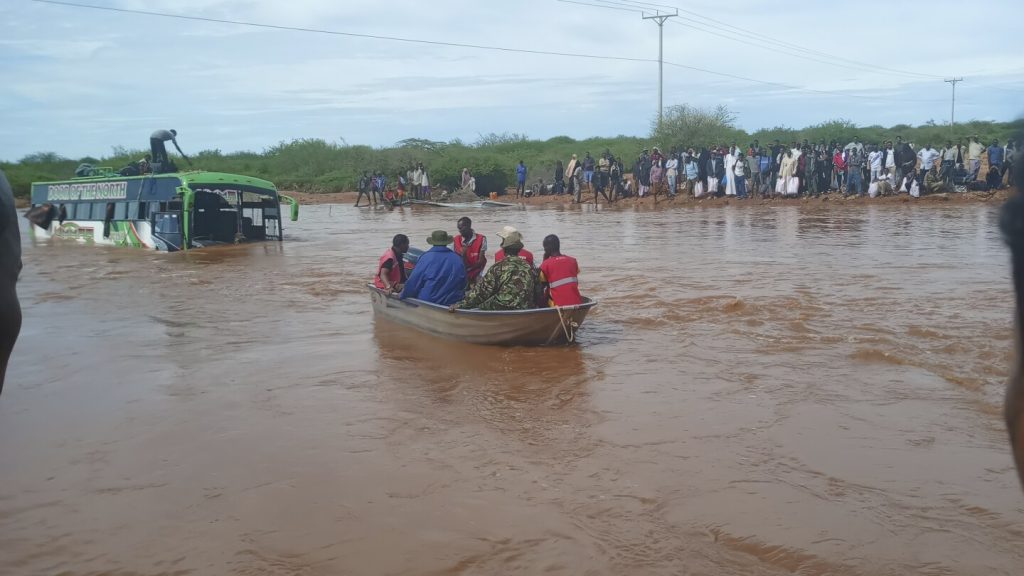Authorities in northern Kenya rescued 51 passengers after their bus was swept away by floodwaters on a bridge. The bus is currently stuck in the river, approximately 30 meters from the bridge. The Tana River county commander revealed that the waters are subsiding, but the road has been closed indefinitely due to safety concerns. Fortunately, all passengers were rescued and are accounted for, but the driver is being sought by police for ignoring the passengers’ concerns and attempting to drive through the water. Some passengers managed to escape before the bus was submerged, while others sought refuge on the roof of the bus. This incident occurred following the closure of another section of the road due to flooding caused by heavy rains and a swollen Tana River. The government had issued a flood alert to residents in Tana River and Lamu counties after a dam upstream breached.
The rescue of the passengers from the bus highlights the dangers posed by heavy rains and flooding in Kenya, particularly in the northern regions. The decision by the driver to attempt to cross the bridge despite clear warnings from passengers underscores the need for greater awareness and caution during such weather conditions. With roads being closed and alerts being issued, it is imperative for residents and travelers to heed the warnings and take necessary precautions to avoid similar incidents. The continuing heavy rains have led to the swelling of rivers and breaches in dams, posing a threat to communities living in these areas. Authorities must remain vigilant and proactive in monitoring the situation to ensure the safety of residents and travelers.
The response by authorities in rescuing all the passengers and accounting for their safety is commendable, but the search for the driver highlights the accountability that must be held in such situations. Drivers must prioritize the safety of their passengers and not take unnecessary risks, especially during hazardous weather conditions. The closure of the road and the ongoing efforts to address the flooding demonstrate the challenges faced by the government in managing such natural disasters. The coordination between different agencies and the issuance of alerts are crucial in mitigating the impact of floods and ensuring the safety of communities living in flood-prone areas. Residents must also be prepared and follow safety guidelines during such emergencies to prevent loss of life and property.
The incident serves as a reminder of the vulnerability of infrastructure to natural disasters and the need for better planning and response mechanisms. As climate change continues to affect weather patterns and lead to more frequent and intense rainfall, it is essential for governments and communities to invest in resilient infrastructure and early warning systems. The government’s flood alert system is a step in the right direction, but more efforts are needed to strengthen disaster preparedness and response. Additionally, public awareness campaigns on safety measures during floods and heavy rains can help reduce the risk of incidents like the one experienced by the passengers on the bus in northern Kenya. It is a collective responsibility to ensure the safety and well-being of all individuals, especially in the face of unpredictable weather events.
As the waters subside and the road remains closed, authorities must assess the damage caused by the flooding and work towards restoring normalcy in the affected areas. The impact of the incident on the passengers and the community serves as a stark reminder of the dangers posed by natural disasters and the importance of timely and effective response measures. The government, in collaboration with local communities and relevant agencies, must work together to address the challenges posed by floods and ensure that preventive measures are in place to minimize the risk of similar incidents in the future. By learning from such experiences and implementing necessary measures, the government can enhance its disaster management capabilities and better protect the lives and livelihoods of its citizens. The resilience and unity shown in the face of adversity can serve as a beacon of hope for all those affected by such disasters.


